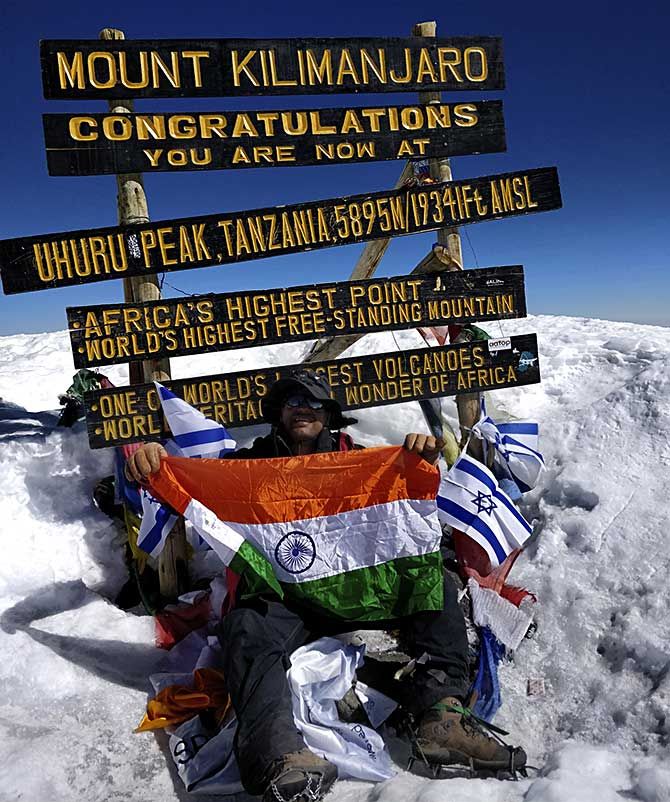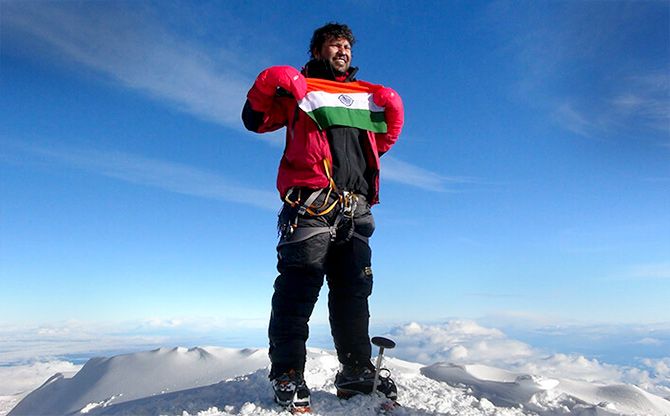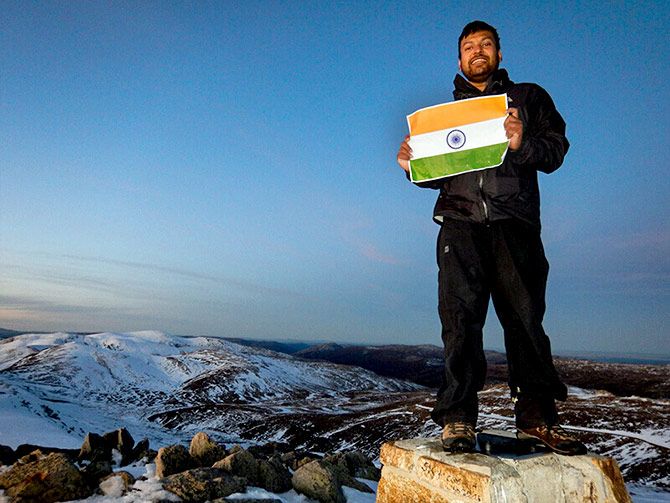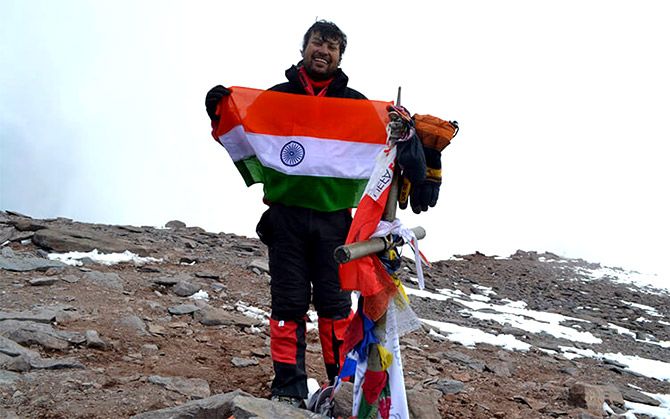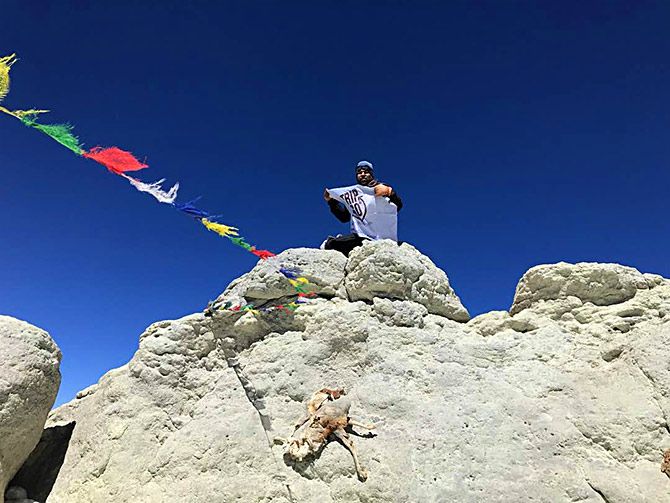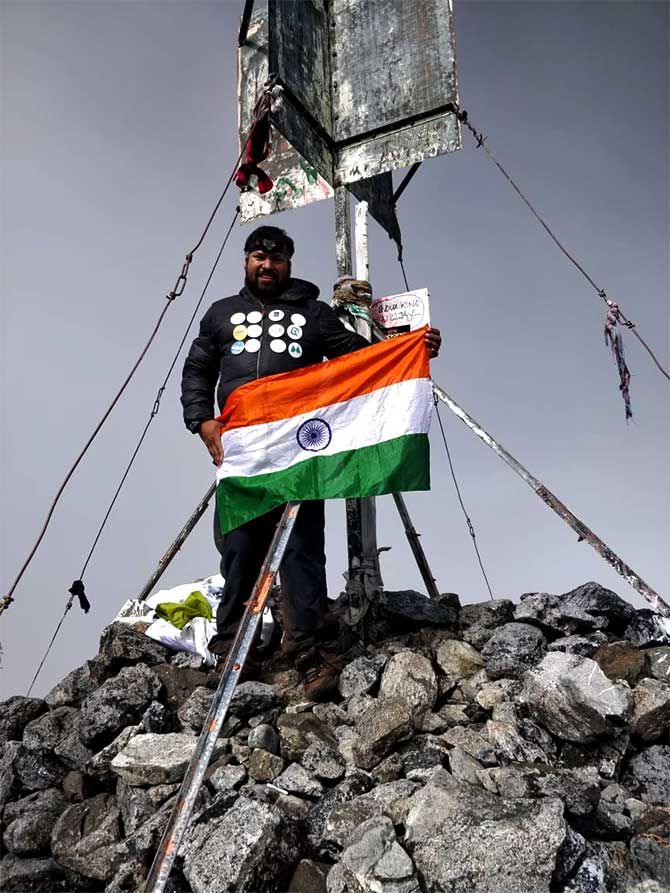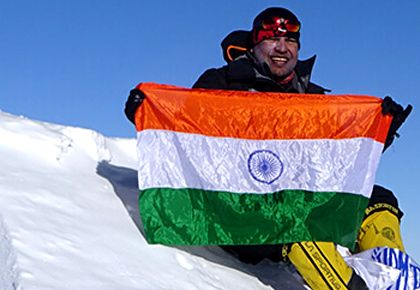Satyarup Siddhanta is the youngest mountaineer in the world to climb both the Seven Summits and the Seven Volcanic Summits.
A Ganesh Nadar/Rediff.com met him before he left for Mount Sidley.
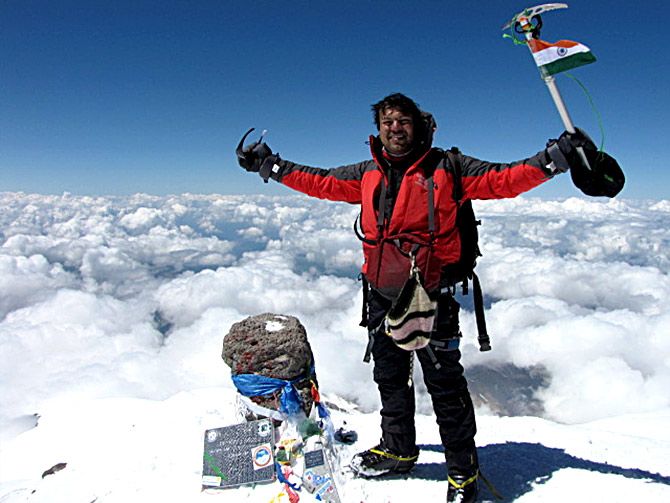
On January 15, as Satyarup Siddhanta flew the Indian flag at Mount Sidley in Antarctica, he couldn't have been happier. 'Summited,' came his post on Twitter.
Followed by 'At 10:10 Fluttered the india flag at sidley what a proud moment'.
In that moment, Satyarup had set a world record. He became the youngest mountaineer to have conquered the Seven Summits and the Seven Volcanic Summits.
He is now back at base camp and tweeted, 'Bad weather at union glacier. . Forced us to camp at the fuel cache. Perhaps we are the first person ever to camp..'
When we last met him in July 2016, Satyarup Siddhanta had scaled six peaks on six continents and was ready to climb the seventh.
In doing so, he mastered the Seven Summits -- the highest mountains in the seven continents (Mount Everest in Asia, Mount Aconcagua in South America, Mount Denali in North America, Mount Kilimanjaro in Africa, Mount Elbrus in Europe, Mount Vinson in Antarctica and the Carstensz Pyramid (Puncak Jaya) and Mount Kosciuszko in Australia).
This time, when we met him, he had finished climbed the six highest volcanic peaks on six continents -- Mount Ojos del Salado in South America, Mount Pico de Orizaba in North America, Mount Damavand in Asia, Mount Giluwe in Oceania, Mount Kilimanjaro in Africa and Mount Elbrus in Europe; the last two, which were formed volcanically, are also part of the Seven Summits) and was readying to climb the seventh -- Mount Sidley in Antarctica.
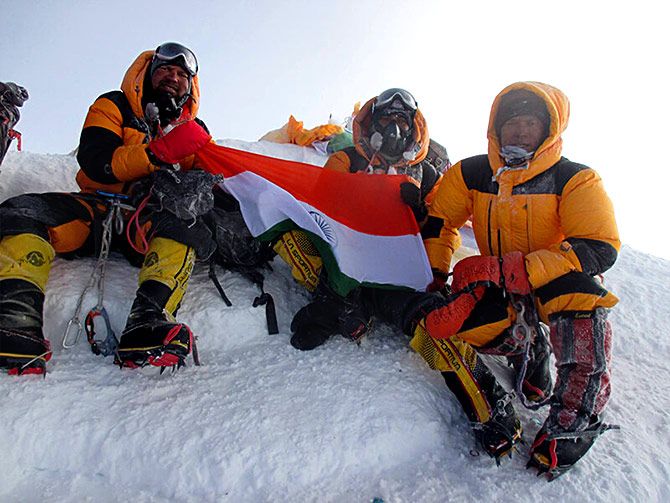
It is hard to believe that, as a child, Satyarup was asthmatic.
A BTech graduate, his passion for scaling mountains made him quit his job at Brady, Bengaluru; he now works for them a consultant.
Satyarup's family -- his parents are retired doctors and his brother is a scientist in Geneva -- were initially hesitant about his passion. "Now," he laughs, "every time I get into debt because I have gone climbing, my brother bails me out."
Earlier, his family used to worry each time he left for a mountaineering trip. "Now," he says, "there is this GPS device called inReach through which you can send and receive messages from anywhere in the world. Since I carry this with me, we are always in touch, so they don't worry as much."
Satyarup has also skied to the South Pole which, he says, is a very different experience.
"When you are climbing a mountain, you have porters. But when we skied to the Pole -- we were six of us -- we had to carry our own luggage and it weighed 50 kgs."
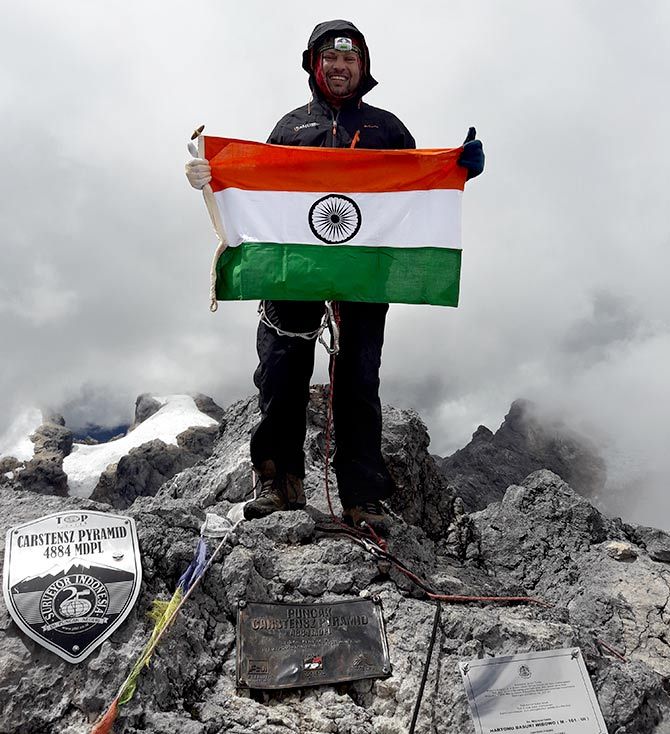
He recalls our last meeting which took place soon after he had conquered Mount Everest.
His next mountain was Carstensz Pyramid in West Papua, Indonesia.
"To climb this mountain, we had to walk through a jungle where the tribes were cannibals. One friendly chief kept us safe by accompanying us to the base camp. He had 18 guards armed with spears."
On the way down, after they crossed a hanging bridge between two mountains, they had to face a hail storm. Four days passed before a helicopter could come to their rescue.
That ride cost them Rs 650,000.
His next successes were Mount Etna and Mount Elbrus in Europe and Mount Giluwe in Australia.
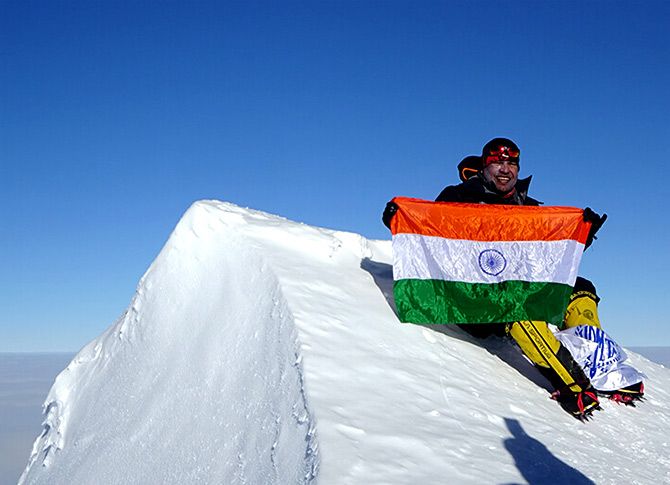
In December 2017, he was in Antarctica, climbing Mount Vinson Massif. They returned after breaking a bottle of champagne on the peak.
They then skied to the South Pole, which is close to Mount Vinson Massif and covered the distance of 111 kilometres in six days.
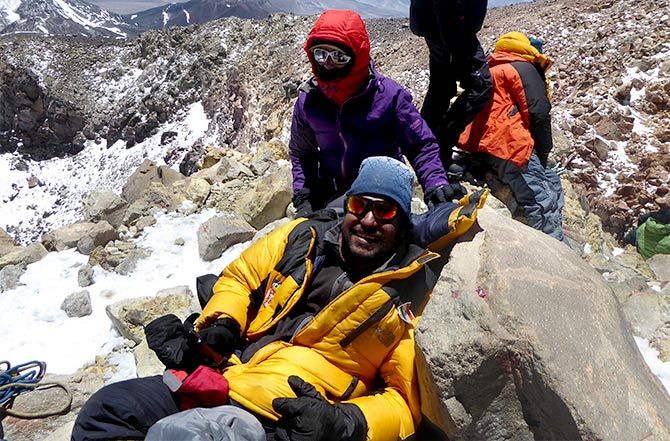
Next, he climbed to Mount Ojos Delsalado, the highest volcano in Chile and the only active volcano in the Seven Volcanic Summits.
Satyarup knew that Indian mountaineer Malli Mastan Babu died in the Andes chain of mountains. He found the place and placed Babu's picture and the National Flag in his memory.
In June 2018, he climbed Africa's famous Mount Kilimanjaro.
The next stop was Iran, where he climbed Mount Damavand. "Sulphur dioxide puffs out continuously, but there was no explosion," he laughs.
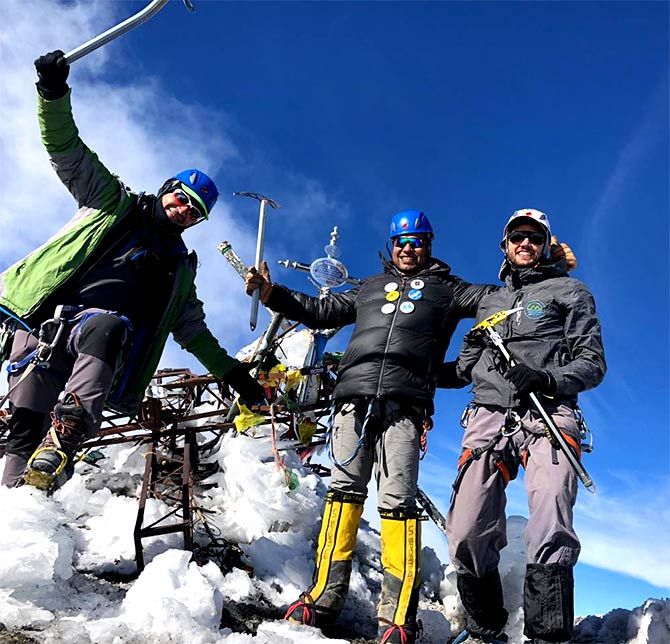
After conquering Mount Wilhelm in Papua New Guinea, his next target was Mount Pico de Orizaba in Mexico. They reached the summit at 2.30 pm. "We sang the National Anthem and planted the National Flag."
As they were making their way to the base camp, a huge rock came tumbling down. His partner's pelvic bone was fractured.
They carried him down from over 5,000 metres to 4,200 metres before a helicopter could rescue them.
His first mountaineering trip in the New Year, Mount Sidley, was the last one he needed to succeed in to set a new world record -- that of being the youngest mountaineer to conquer the Seven Summits and Seven Volcanic Summits.
The record was earlier held by Australian mountaineer Daniel Bull who achieved this feat at the age of 36 years, 157 days.

Satyarup is 35 years, 9 months old. He has some advice for potential mountaineers.
"There will be risks everywhere. You must identify and mitigate. The three things you must have are the right attitude, the right experience and the right skills."
"If you are thorough in these three, they reduce the risks manifold."
"Fear is always there. Use it constructively; channelise it positively. Dream big. Chase your dream. Nothing is impossible!"
What about marriage? He laughs again. "I have a Rs 43 lakh loan. Who will marry me?"
Glimpses from his amazing climbs!
